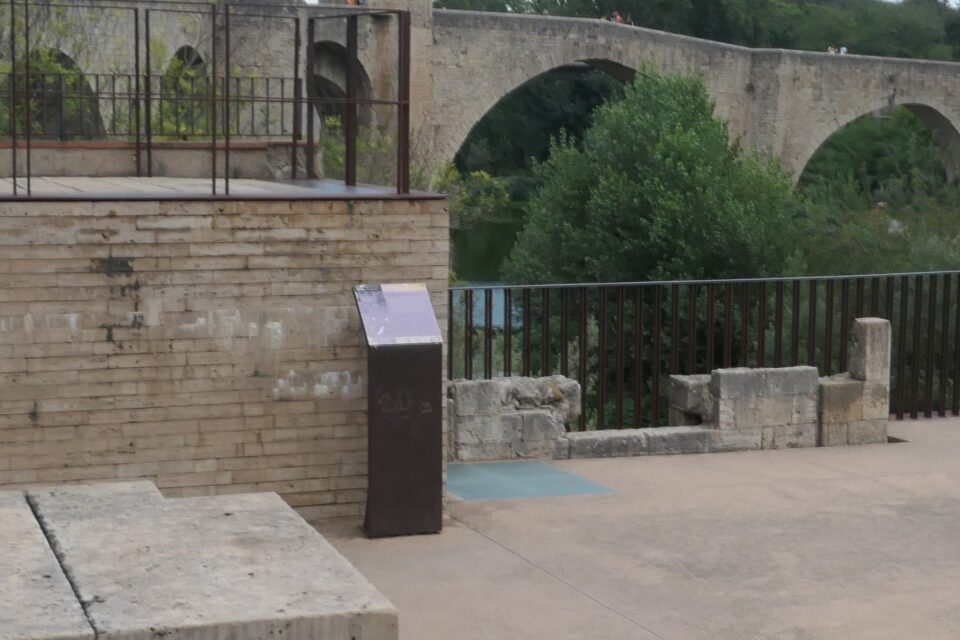AUGUST 17, 2024: Besalú is a small medieval town (population about 2500) a ½ hour drive northwest of Girona. It sits on the Fluvià river, and its most iconic feature is the stone bridge at the entrance to the town. The bridge, known as Pont de Besalú, or Pont Vell (Old Bridge), has multiple arches and a fortified tower. Not only is it beautiful, but it is also a stunning example of medieval engineering. The original bridge was built in the 11th century and swept away by a flood in 1315 and rebuilt shortly thereafter. After being destroyed during the Spanish Civil War (1930s) it was reconstructed once again in the 1950s-1960s. In the Middle Ages, a toll was collected for crossing the bridge. Today, you can walk across it freely, and it provides the best access to the historic center of Besalú.
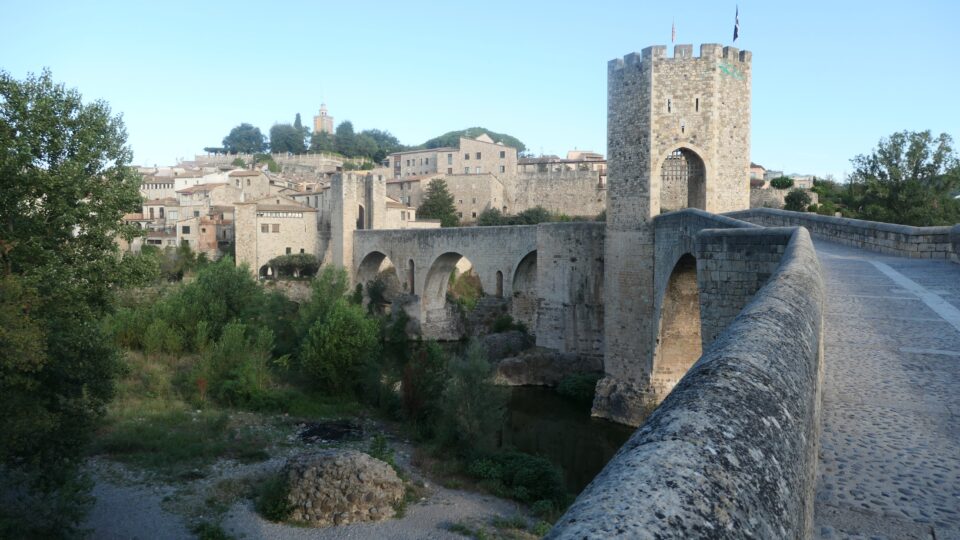
The streets of Besalú are well preserved and to walk the narrow, cobblestone lanes, gives you a glimpse of medieval life. The town had a significant Jewish community during the Middle Ages and the Jewish Quarter remains one of the best-preserved areas.
We visited Besalu in 2007 and remember it as a small, quiet, and authentically charming place. In the years since, it has become much more of a tourist destination, and while still charming, it is no longer so quiet. Parking is difficult, tourists crowd the streets, and renovated shops and restaurants line the alleyways.
For this trip, we stayed four nights in Besalú, using it as a base for day trips. Today, Saturday, we woke up early to wander around the town before the crowds arrived. It was about 7:30 in the morning when we left our apartment. The streets were now deserted and quiet. The way I like them.
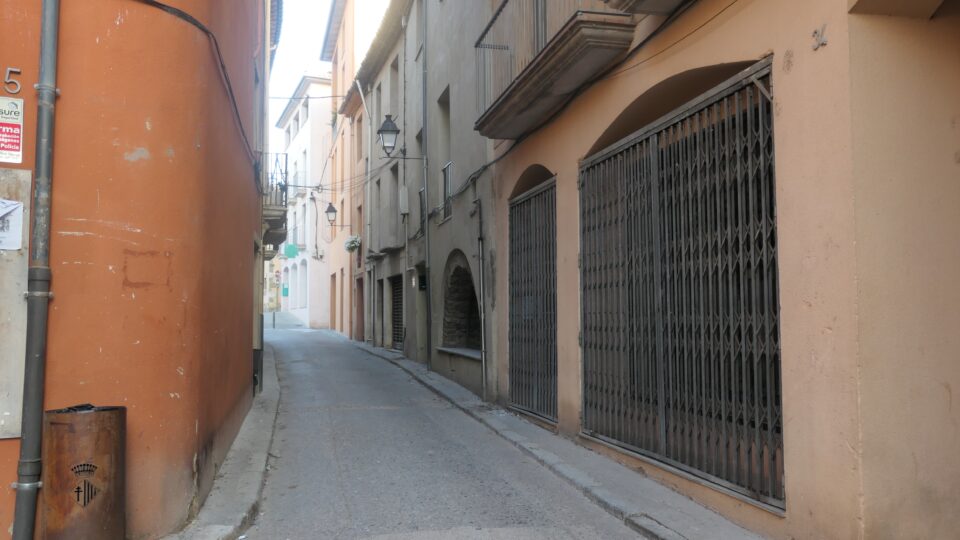
We passed the hotel where we stayed on our previous visit. Our room then overlooked the main square (Plaça Prat de Sant Pere,) and I remember waking up Tuesday morning to the sounds of the weekly market. The square was full of local vendors selling anything and everything from fruits and vegetables to housewares and hardware. Unfortunately, this time we will be leaving Besalú on Monday and will miss the chance to see the weekly market that still happens every Tuesday.
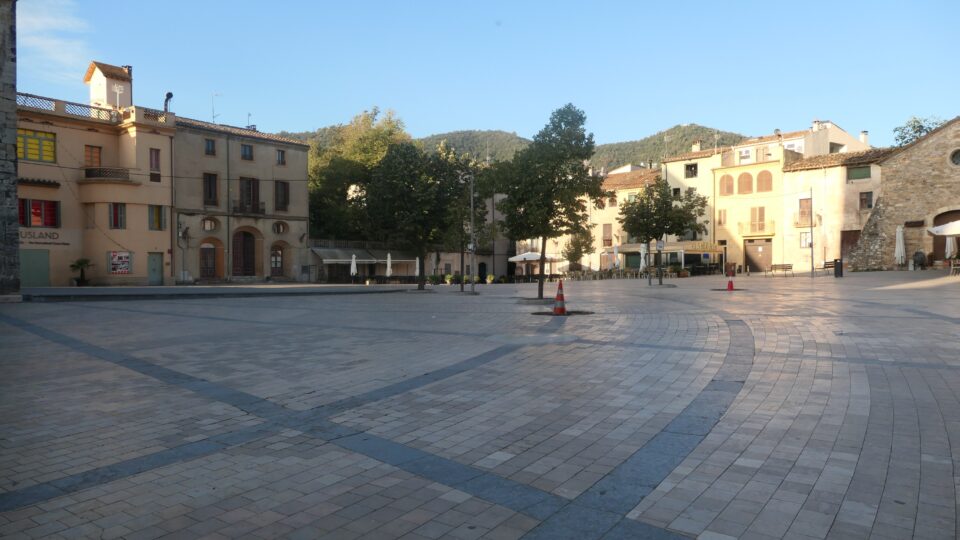
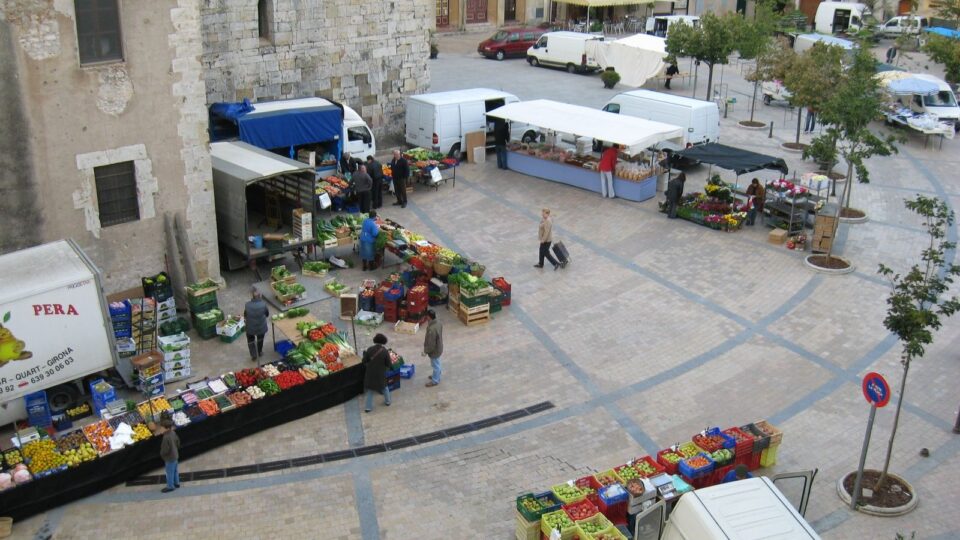
We made our way through the empty streets to the Jewish quarter. Our apartment was at the opposite corner of the historic district. Being a small town, it took just a few minutes to walk to the Call, the neighborhood of the Jews.
Jews lived in Besalú for almost 500 years. A Jewish tombstone dating from 1090 was found here. At its peak, Besalú had about 220 Jews, which made up almost 25% of the population. The community built a synagogue and a mikveh, remnants of which are still visible today. The Jews also had a school and usually were more educated than the general population. Besides agriculture, they practiced the professions that Christians considered impure such as moneylending and being medical doctors.
At first, they used the services of the Girona aljimah but in 1342, they were given the right to be their own aljimah. For several decades the community flourished. However, in 1391, a series of violent anti-Jewish pogroms swept across Spain, fueled by the Archdeacon Ferran Martínez, who stirred the population against the Jews and preached that they should be forced to convert to Catholicism. Throughout Spain, thousands of Jews were killed, many were forcibly converted to Christianity, and once-thriving Jewish communities were devastated.
In Besalú, the King then decreed that all the Jews must now live in the Call, the small area between the river and the main street leading towards the bridge, where the synagogue, school and mikvah were located. Wealthier Jews who had lived elsewhere in the town, were forced to quickly sell their houses and move to the Jewish neighborhood. The Call was then walled off and the only entrance/exit to the Jewish area was a gate that led to the river.
Conditions for the Jews in Besalú then further deteriorated and eventually all left the town. When the expulsion of 1492 occurred, there were no Jews left in Besalú to expel.
As we made our way to the Jewish quarter, we passed a house where an indication that a mezuzah once hung in the door frame is clearly visible.
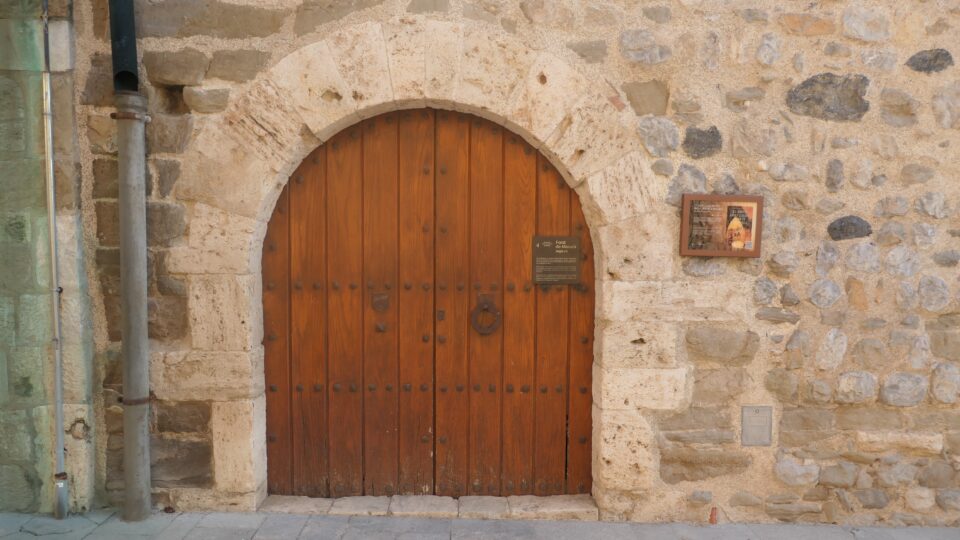

This doorway is part of Curia Reial, a building that once was home to the Jewish Astruc family, a prominent Jewish family of moneylenders. In the mid 14th century the house was taken over by an administrator of justice for the king. My assumption is that this happened when the Jews were forced to all live in the Call. Today it serves as part cultural hall and restaurant. On the ground floor, supposedly is a small exhibition where a tombstone of a young Jewish girl named Rachel, daughter of Rabbi Yusef, dated 1446, is on display. Since all was closed today, we could not confirm this.
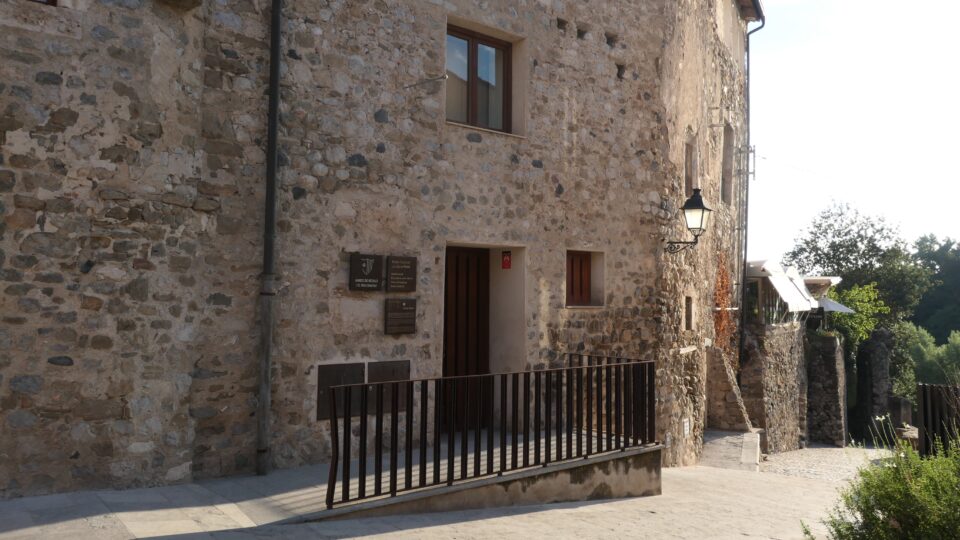

We then walked along the river and entered the Call through the opening in the medieval walls that was once the only gate to the neighborhood. The area where the synagogue stood, is now a paved plaza.


At the edge of the plaza of the synagogue are the remains of the stone wall of the school. The location offers a beautiful view of the bridge, and my guess is what draws most of the tourists to come to this spot is the scenery, not the history.
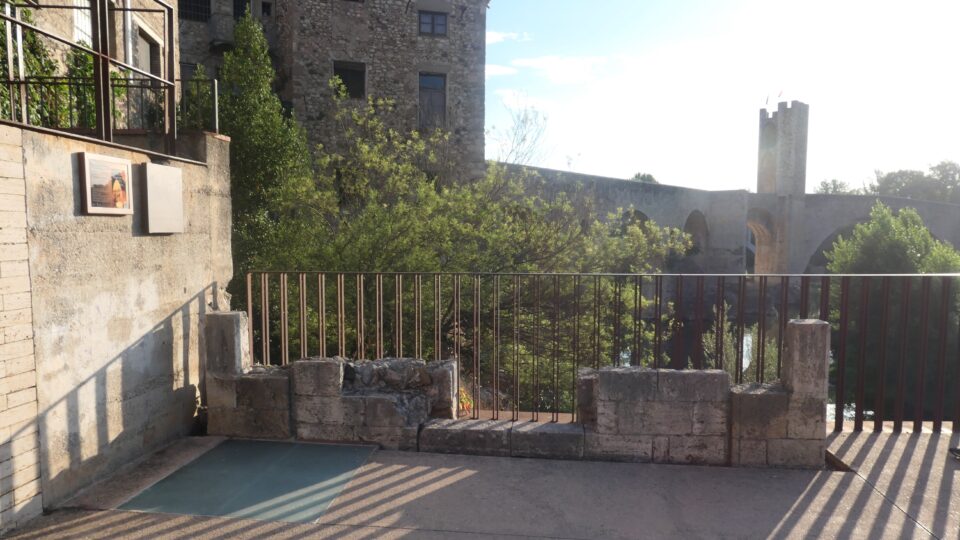
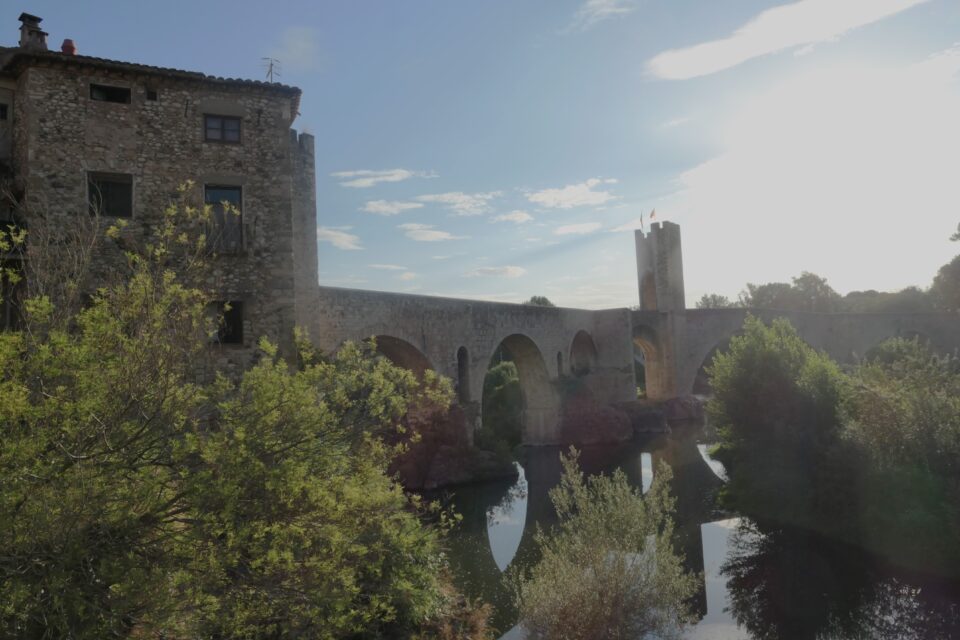
The highlight of the ancient Jewish neighborhood in Besalú is the mikveh. It is one of the few from the 12th century in Spain that survive till today. It was now gated closed, and we could only peek inside through the bars. We later discovered that the tourist office offers tours inside the mikvah several times during the week. Unfortunately, we would not be in Besalú when the tours were taking place.
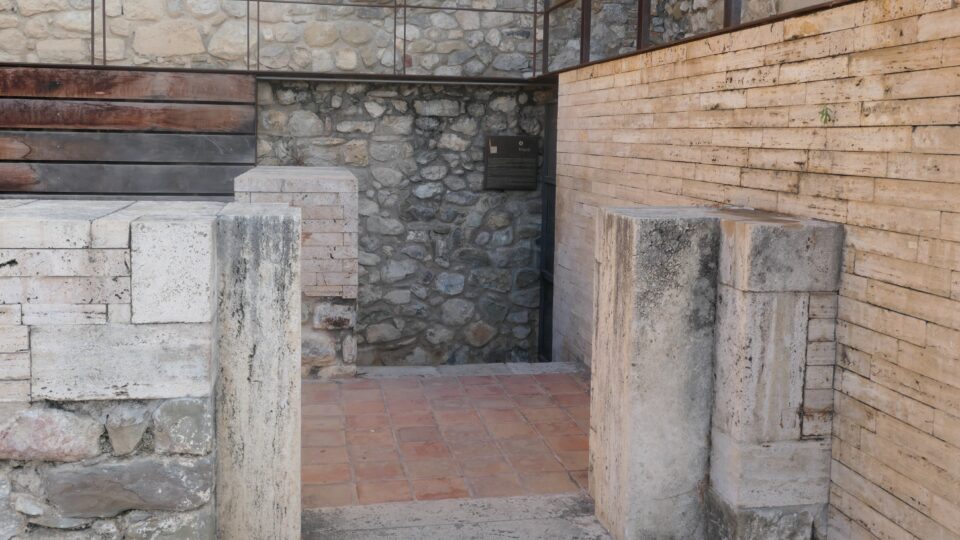
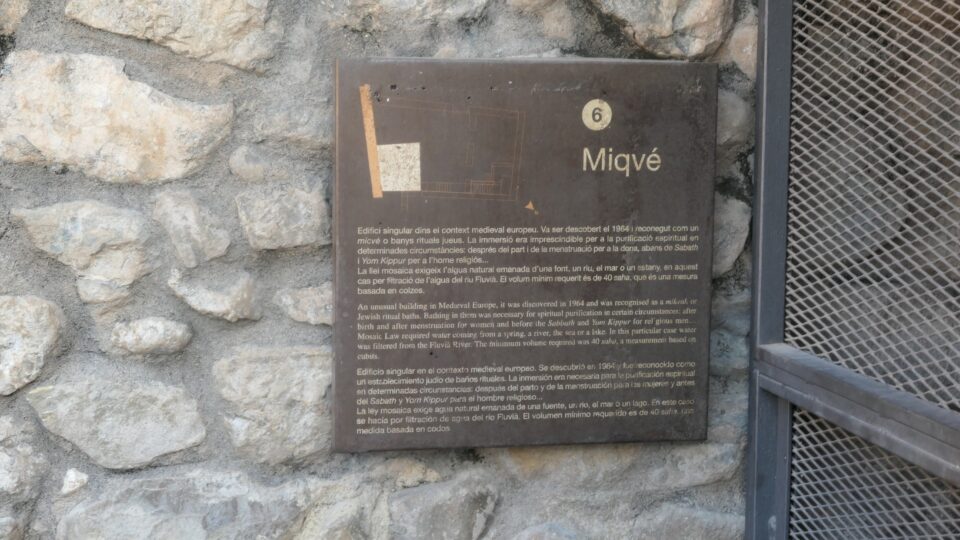
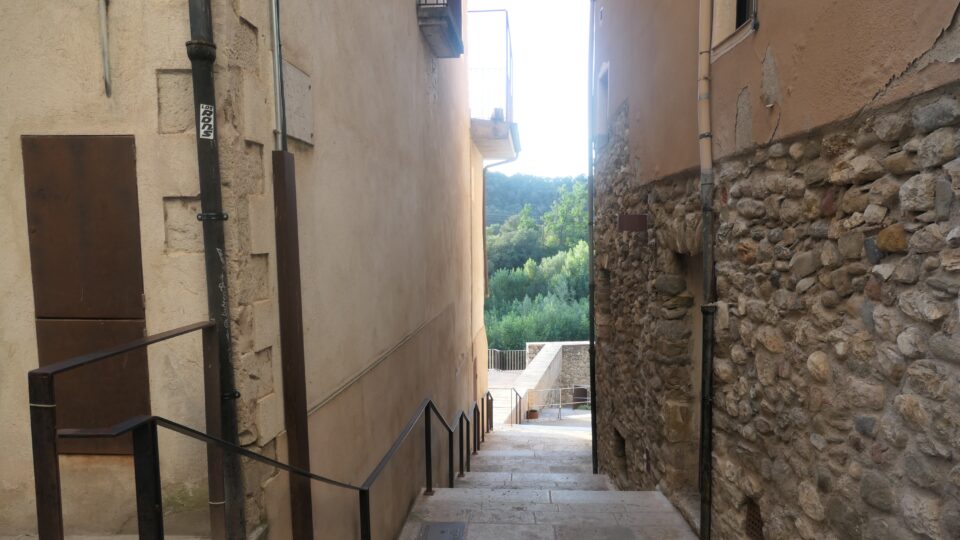
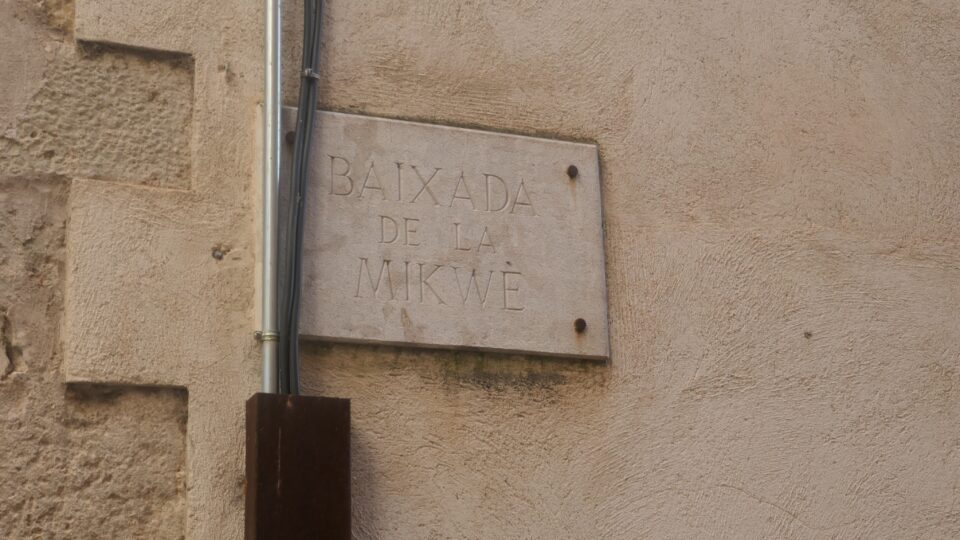
From the Call, we walked to the nearby medieval bridge enjoying the view. Parallel to, and not far from the old medieval bridge, is the New Bridge, where cars now drive to pass through the town.
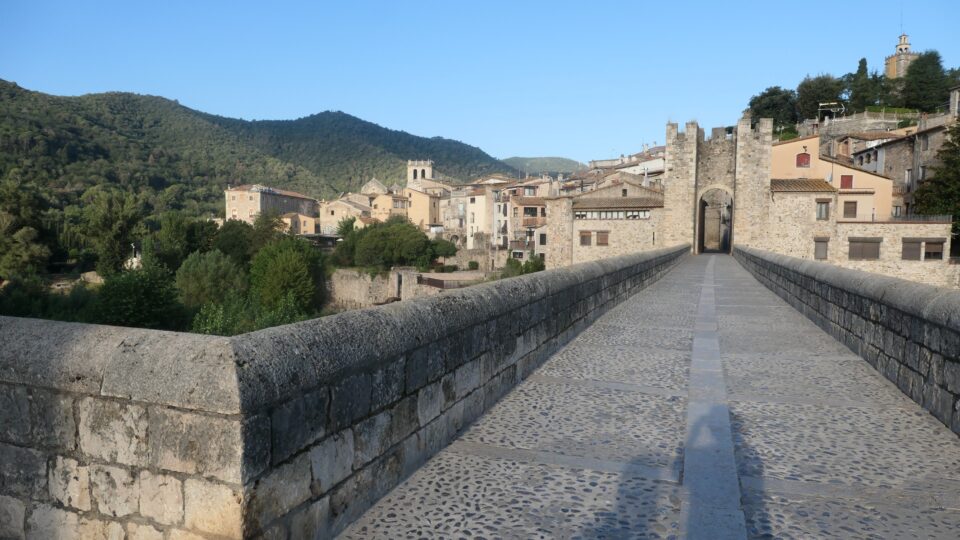

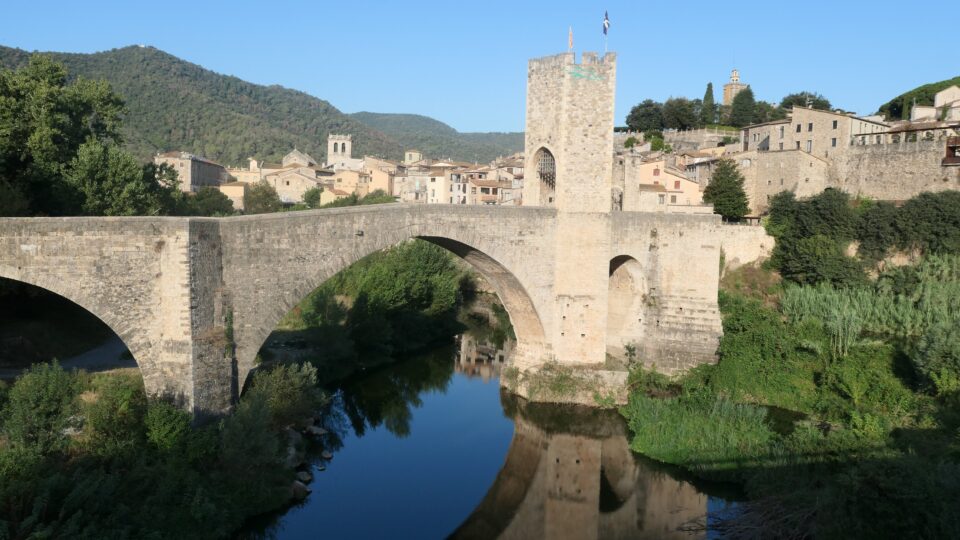

We walked along some of the remnants of the medieval walls, and then through the still-empty streets back to our apartment.
As we walked, we noticed several showcases displaying a Jewish route through Besalú based on scenes from the book “El Pont Del Jeues” by Martí Gironell. The title translates as The Bridge of the Jews.

This book was Martí Gironell’s debut novel and it takes place in Besalú (the author’s hometown) during the reconstruction of the medieval bridge in 1316. It portrays life in medieval Catalonia and the relationship between the Christian and Jewish populations in Besalú. The plot revolves around a Christian bridge builder who marries a young Jewish girl. It is not only about the bridge across the river, but also about the bridge between the two communities.
The book became a bestseller in Catalonia. The novel was written in Catalan and has been translated to Spanish, Portuguese, Polish and Italian. Unfortunately, there is no English translation as far as I can tell.
Also, throughout the town (posters on buildings, flags along the roadway) were signs for Circusland. When we were here in Besalú in 2007, we visited the Besalú Micromundi Museum of Miniatures. This was a interesting museum located on the main square that featured a collection of miniature scenes, many that needed to be viewed with a magnifying glass.
The Museum of Miniatures has now been replaced by Circusland – a museum dedicated to the circus arts with a large collection of circus memorabilia, posters, costumes, props and stamps from around the world. Circusland and a medieval historical town – just didn’t seem like a good combination to me. There were Circusland advertisements everywhere. In my eyes, this distracted from the town’s charm.
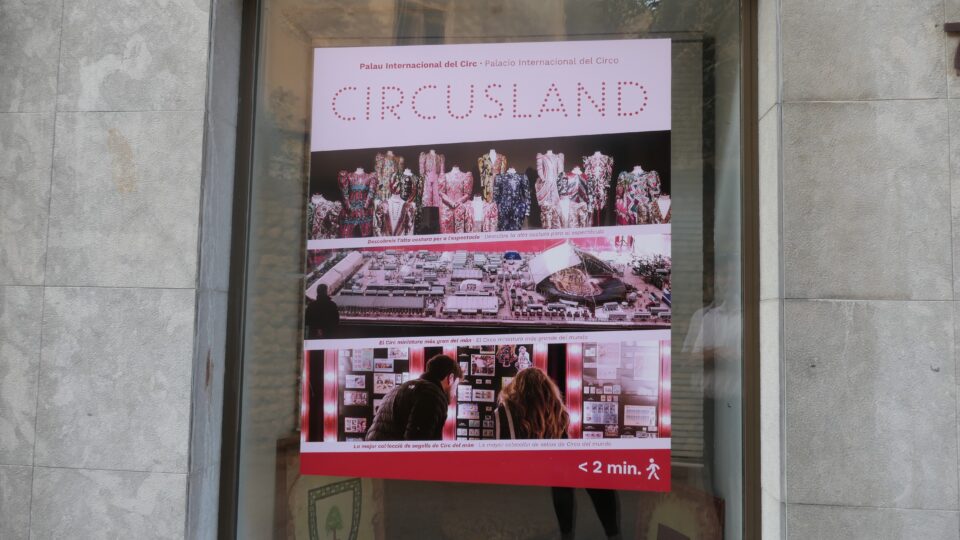
After returning to our apartment for the usual Shabbat activities (prayers, meals and rest), we left the house once again at 18:30 in the evening. Now the streets were alive and full of people, the stores and restaurants were open – a very different feeling from the quiet morning.
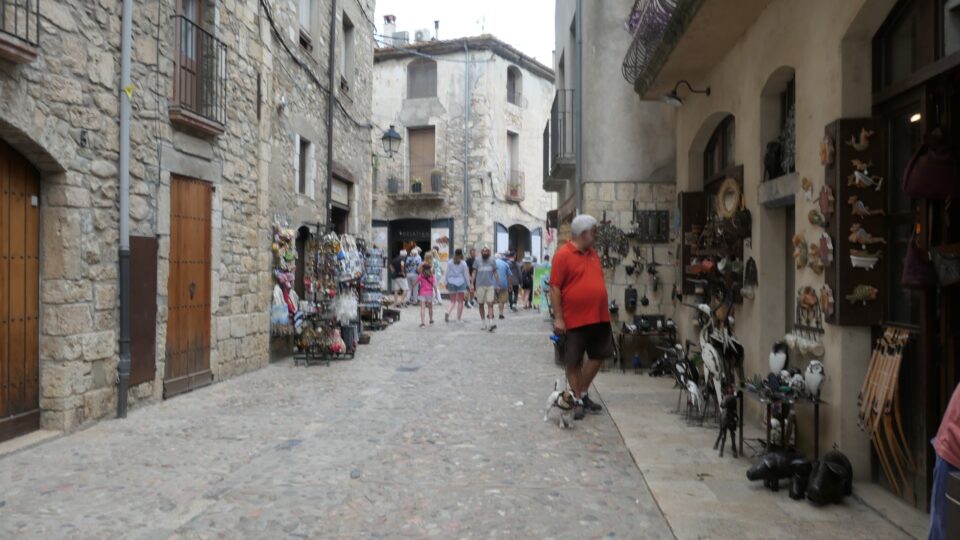
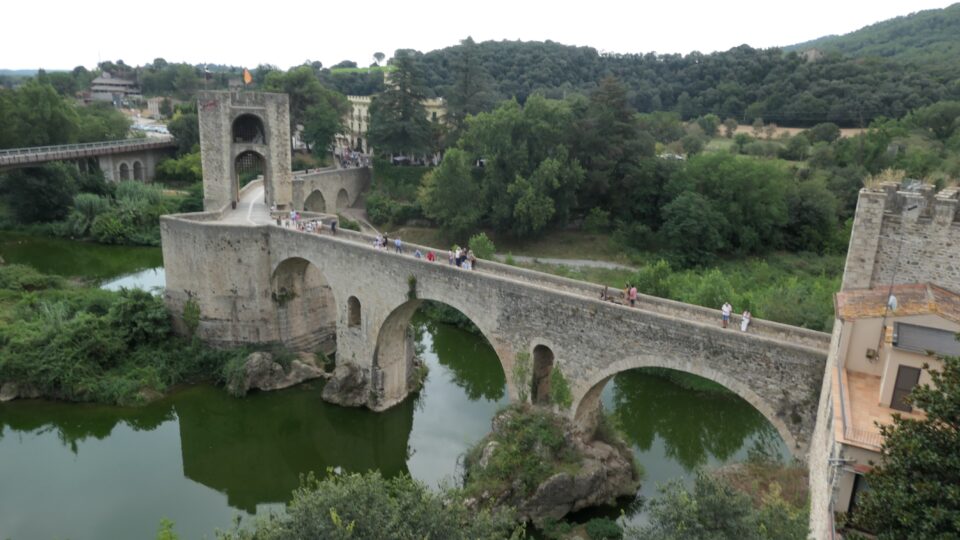
We returned to the Call, always trying to walk down streets we had not yet seen. Along the way, we discovered one more item of Jewish interest. It was a small street named Abraham del Castlar (Calle del Abraham del Castlar). Abraham del Castlar was Jewish, lived at Besalú in the first half of the fourteenth century and was considered one of the most skillful physicians of his time.
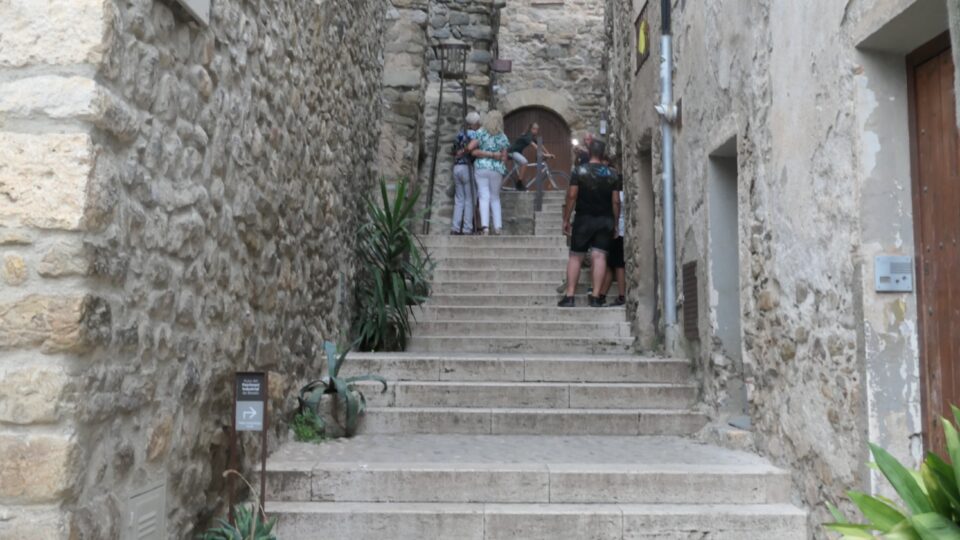
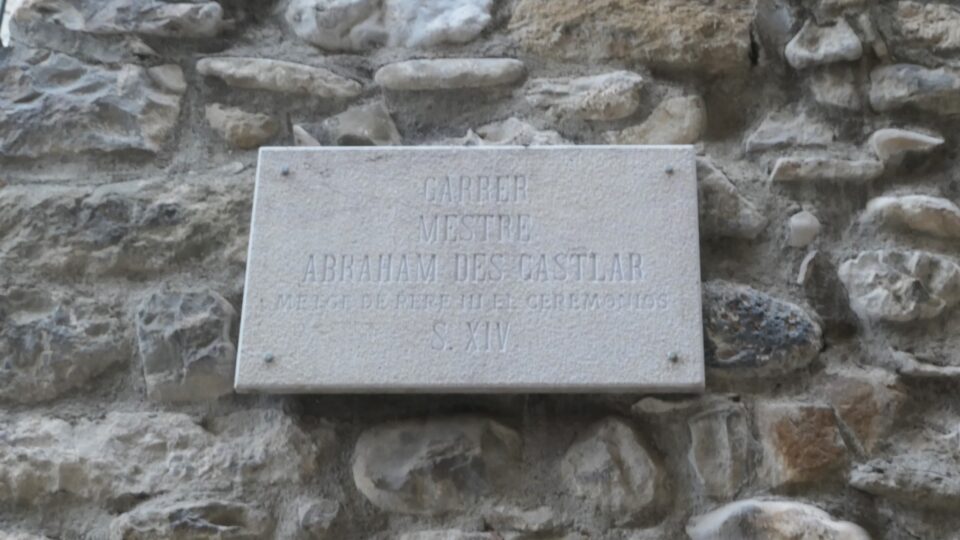
Another difference from our trip in 2007, is a much more noticeable Muslim presence. Islam is the fastest growing religion in Spain. Seeing woman wearing the hijab or headscarf is commonplace, even in small towns like Besalú. Due to the current political climate, this trip we told everyone that we are from New York, not from Israel. Mark never left our apartment without a hat covering his kippa. It is a bit upsetting seeing the Muslims wear their identity freely, while we felt the need to conceal ours.
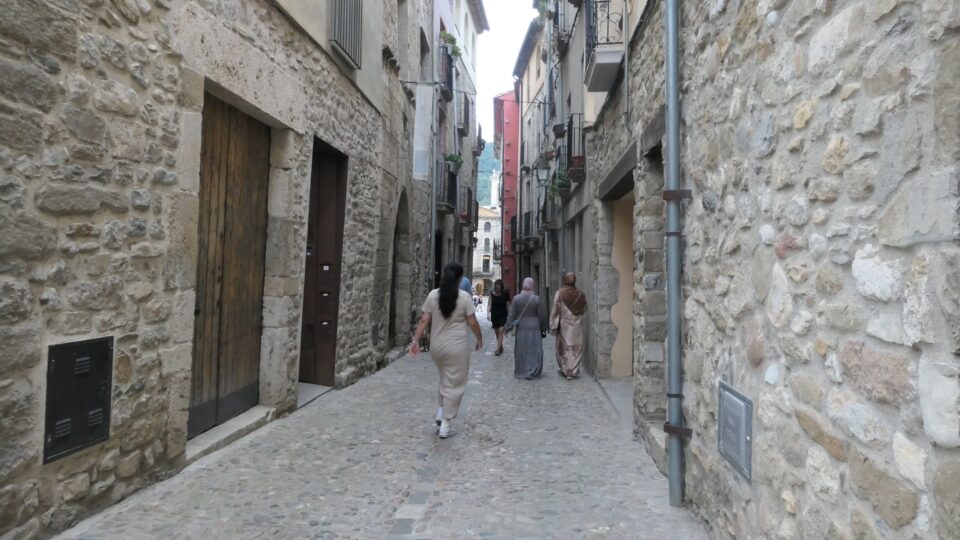
Today was about Besalú. Tomorrow we are going to visit Castelló d’Empúries – another town in Catalonia with a Jewish past. One website I read said that many of the Jews of Besalú escaped to Castelló d’Empúries when conditions in Besalu deteriorated. Tomorrow we will learn more.
